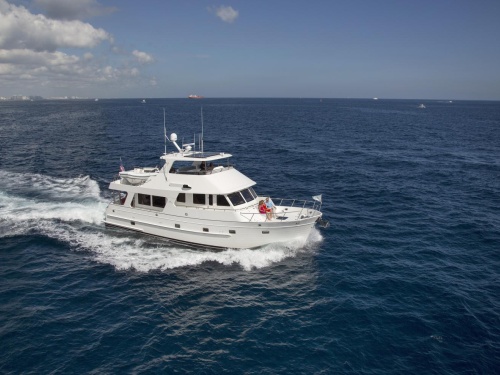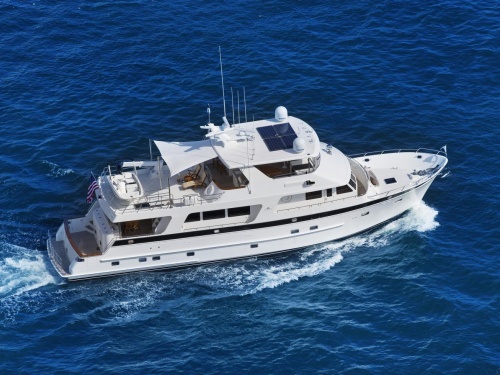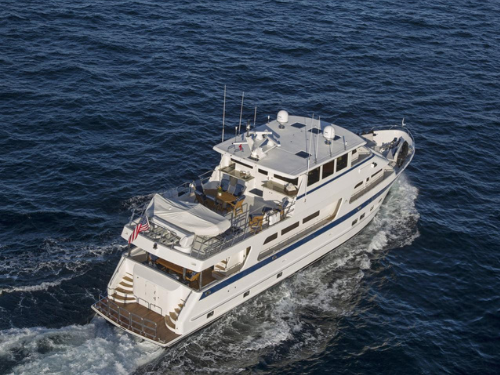Access More Boat Tests
Already have an account? Login
By submitting this form, you acknowledge that you have read and agree with the Privacy Policy & Terms of Use of BoatTEST.com.
Outer Reef 610 Motoryacht (2019-)
2 x 750-hp John Deere 6135
Brief Summary
The Outer Reef 610 Motoryacht is designed to be an owner/operated, safe and secure long-range yacht, filled with luxury and amenities to keep her guests comfortable and well entertained. Our test boat was powered by twin John Deere 750-hp engines with ZF transmissions. She has an LOA of 61'2” (18.6 m) and a beam of 17'2” (5.23 m) and a draft of 5’ (1.52 m). However, she is surprisingly easy to operate. The Outer Reef 610 is designed to operate at displacement speeds of 8 knots or so, but in our tests with a full load of fuel in rough conditions topped out at just under 16 knots.


